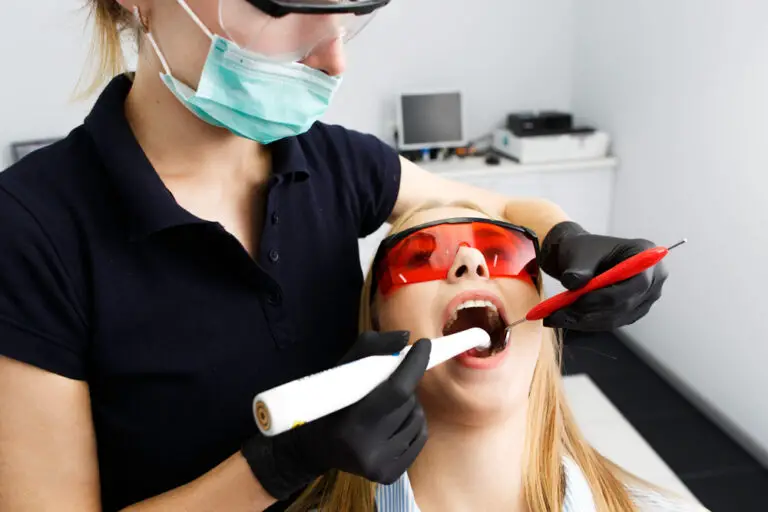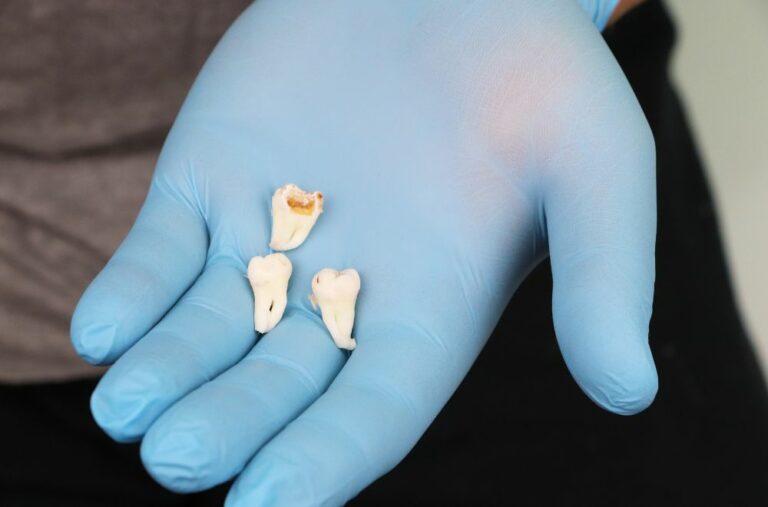Few people enjoy going to see a dentist more often than is necessary since lots of dental procedures can be extremely uncomfortable at best – and that’s before we even mention the price because dental fees are far from cheap.
This means if you have major work done like having a crown fitted, you’ll want it to last as long as possible. And to help you understand what to expect as well as how to increase the lifespan of a crown, in this post, we answer the question, how long does a dental crown last?
If you want a preview of some of the things we’re going to be talking about, you can also check out this video before reading on.
How Long Does a Dental Crown Last? The short answer
The average lifespan for a dental crown can vary, and there are several factors that can affect how long a crown can last – but before we get into the detail, we can start with a short answer.
How long do crowns last? If you have a crown fitted, you can usually expect it to be in place for around 10 to 15 years – or even longer if you’re lucky.
However, there’s much more to this topic than just this, so now let’s jump in and look at things in a bit more depth.
What are dental crowns and why do we need them?
Let’s start at the beginning – what are dental crowns?
Dental crowns are essentially caps that are placed over teeth to strengthen them if they have become weakened or to restore them if they are cracked or damaged.
Crowns are often used for aesthetic purposes to improve your smile by making a tooth look healthier and more natural, and another common use is to protect weakened teeth after a root canal.
If you need a filling but there isn’t enough of the affected tooth to hold the filling, a crown may be used instead, and they are also required when having a dental bridge fitted.
In most cases, you will need to visit your dentist at least twice. During the first appointment, the dentist will prepare the existing tooth by removing any decay. Imprints of the tooth are then made, which are sent off for the crown to be prepared.
Once the crown has been made, it is fitted to the tooth during a second appointment. The whole process should be painless since the dentist will use local anesthetic.
Which materials are crowns made from and how long do they last?
When having a dental crown fitted, one of the most important decisions you will have to take, with the help and advice of your dentist, is which material to use for the crown – and this is one of the most significant factors that will affect how long it will last.
There are several options, and each offers different advantages and disadvantages – generally speaking, your choice will give you the best combination of aesthetics, durability and price for your needs.
Here are some of the most commonly used materials.
Gold
Gold has been used for dental crowns for over 100 years, and this is because it is an incredibly durable material.
Gold has among the longest lifespans of any material used for crowns, with a 95% chance of lasting at least 10 years – and a good chance of lasting a lot longer.
However, there are a couple of downsides.
First, gold crowns are particularly conspicuous, so for this reason, they’re less than ideal for teeth that can be seen when you smile.
And then there’s the price – because gold is expensive!
However, some dentists may still recommend gold for molars further back in your mouth, and if you take good care of them, they should last a long time.
Porcelain fused to metal (PFM)
Along with gold, PFM crowns have long been a preferred material for dental crowns.
As the name suggests, they consist of a metal base fused to a porcelain coating. This gives them the advantage of being extremely long-lasting while also making them look natural. As a result, they are a popular choice for more visible teeth.
However, the porcelain part can chip relatively easily, so people with crowns made of this material will need to be careful when eating hard foods.
They will also eventually wear down, and if they chip or wear down, the metal base can show through – when this happens, they lose their natural aesthetic.
If you have PFM crowns, you can expect them to last between five and 15 years – with 10 years being about normal.
Zirconia
Several ceramic materials are used for crowns, and one of the more recent types to appear is zirconia.
Zirconia is made of zirconium dioxide, a material that is much more resistant to chipping or cracking than traditional porcelain. It is considered the strongest non-metallic option and can withstand the highest pressures of all porcelain-based materials.
This means that zirconia crowns are a good choice for molars and can be expected to last at least 10 to 15 years or more with proper care. The only real downside is that they sometimes don’t fit as well as crowns made from other materials.
Lithium disilicate
Another popular material used for crowns, lithium disilicate is a glass ceramic that’s hard and durable and also easy to work with.
Nowadays, some dentists even have machines in their offices that can make lithium disilicate crowns while you wait. This means the whole process of having the crown fitted can be done in one visit instead of having to schedule at least two trips to the dentist.
This has led to this material becoming one of the most commonly used materials for dental crowns.
Their expected lifespan can range from five to 15 years, and they can even last longer than this if you look after them properly.
How can you increase the lifespan of your crown?
With all of the materials we’ve mentioned here, you can usually expect a dental crown to last at least ten years with proper care, although if you don’t look after them, they will probably need replacing earlier. So what can you do to extend a dental crown’s lifespan?
The most important thing you can do is to always practice good dental hygiene. This means you should brush your teeth regularly and you should floss at least once a day.
This will help keep your teeth and gums in good condition, reducing the risk of any problems developing with your crown.
At the same time, you should visit a dentist for regular check-ups, and scheduling dental cleaning every six months is also recommended.
Regular trips to see your dentist will allow them to catch any problems early before they become more serious and risk compromising your crown.
Although a crown should allow you to eat whatever you like, certain hard or sticky foods are riskier, so you should be careful when eating them.
You should also avoid using your teeth as tools for things like opening bottles since this will risk damaging your crown, resulting in another expensive dental procedure to replace it.
How do you know when a crown needs replacing?
The only way to confirm that a dental crown needs replacing is through a visual examination or an X-ray carried out by your dentist.
However, there are a few tell-tale signs that you should look out for, including the following:
- Pain in the tooth
If you start experiencing pain in a tooth that has a crown, it’s a clear sign that you need to book an appointment with your dentist to get it looked at.
- Unstable crown
If the crown feels like it’s moving about, you should also go to get it checked out with your dentist.
- Visually worn
After it’s been in your mouth for a long time, a crown may start to lose its shape, so you can have your dentist look at it and consider having a replacement fitted.
FAQs
Which material should you choose?
There’s no -one-size-fits-all when it comes to crowns, and each individual case is different. This means you should discuss your options with your dentist to find the right balance of price, aesthetics and durability.
What else affects how long a crown lasts?
Other than how you look after it and what it’s made of, some other factors can affect how long a crown will last.
These include the health of the tooth it’s attached to and the skill and experience levels of the dentist who fitted it.
Grinding your teeth at night can also wear a crown down much faster, and if you know this is something you do, you might consider wearing a mouthguard for sleeping to protect your crown and other teeth.
Much you can do to extend a crown’s lifespan
As we’ve seen, most crowns can be expected to last at least ten years, and if you take care of them, they can last up to 15 years or even considerably longer.
Many factors can affect how long a crown will last, not least the material it is made of. However, there is also a lot you can do to ensure your crown lasts as long as possible, which includes following good dental hygiene practices and having regular dental check-ups.







